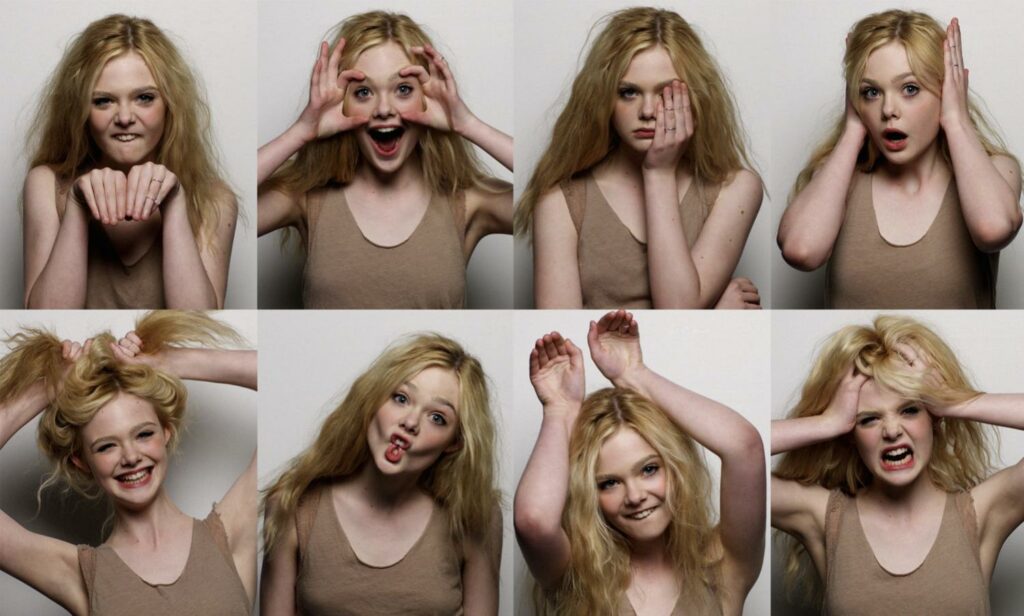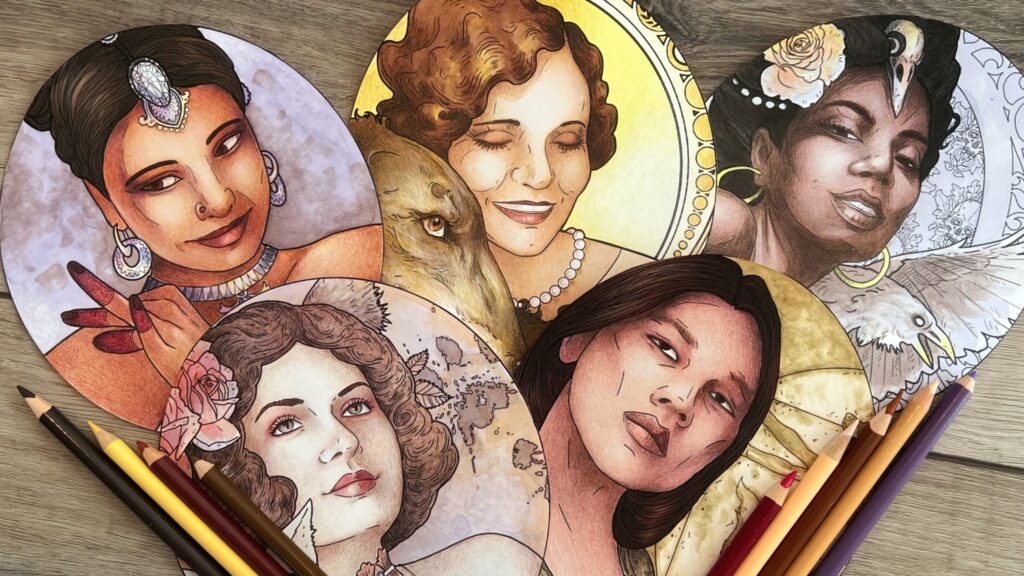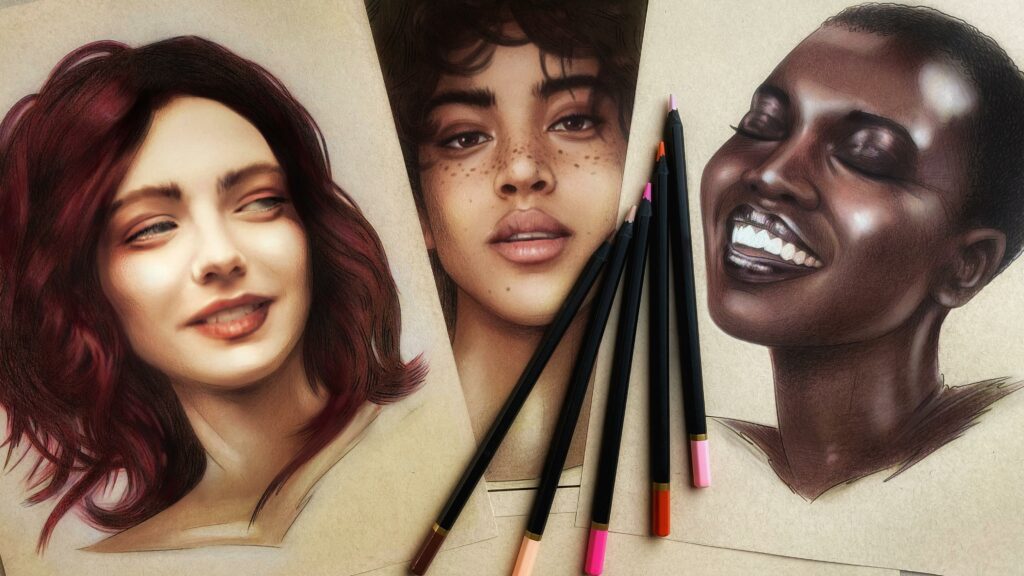In all my time drawing coloring pages and teaching coloring techniques, I learned quite a bit about the psychology behind skin tone coloring and why so many people struggle with it.
Before we jump into why skin tones give colorists the most grief, let’s examine human faces and how we interact with them.
After all, without faces we wouldn’t have skin tones to worry about at all.
Research shows us that human beings have by far the strongest emotional reaction to human faces over anything else out there. Yes, even over puppies.
Regardless of how you feel about people, regardless of whose face you’re looking at, if it’s human your emotional response will spike dramatically compared to the response your brain exhibits when you look at even the most beautiful of sunsets.

This means two things for artists and colorists.
1. Using portraits in your art will get your work more noticed and interacted with.
2. Improving your portrait drawing and coloring skills is essential.

Join the Skin Tone Mastery course HERE
But why would we struggle with drawing and coloring a subject matter that’s so near and dear to our hearts?
Shouldn’t we be experts at human faces if we’re so connected with them?
Quite the opposite, in fact.
Because we’re so familiar with the human face, we no longer see it for all that it is, but rather see it in caricature. There’s a huge element of recognition, rather than observation, at play.
When you look at another person in front of you, you rarely (unless you’re a face-obsessed artist) study their bone structure and the way the shadows happen to be playing on their eyelids as they move and blink. Instead you see – young, old, tired, goofy, attractive, awkward, smiling, frowning, etc…
In our minds we reduce human faces to the very basic classifications that are relevant to the current interaction.
For instance, if you’re pulled over by a traffic cop, you probably see a towering, intimidating, and frowning individual, and you probably won’t recognize him should you run into him days later at a baseball game.
Your mind just turned him into a caricature of a scary authority figure.
However, if you’re out on a date, you’re probably seeing a warm, happy, smiling face, and are trying to imagine all the other positive posibilies of continuing the interaction.
Obviously, some of us have had quite the opposite experiences, but you get the idea.

In either case, you’re NOT studying the exact shade of the skin tone on the left side of the face as the sunlight casts a shadow on it. That’s just not how our minds naturally work.
We see people, not skin tones.
When drawing and coloring, we revert to our natural perception of human faces – the emotional perception, forgetting all about light, shadow, and color.
In the coloring world, the biggest mistake I see colorists make on portraits is not using enough color variation. Many people try to find that one perfect pencil to match the desired skin tone, and that’s just not how it works.
In my 6-hour video course Skin Tone Mastery, I provide students with my personally developed color palettes for a whole range of skin tones, AND teach them to build their own color schemes for any skin tone out there.

If you’re a colorist, YouTube color-alongs will only get you so far. There simply isn’t an exact guide for every possibility out there.
I believe in teaching a student how to fish, rather than giving them a fish.
Come join one of my professional, university-level art courses, and arm yourself with skills that you can apply to any kind of skin tone coloring. Once and for all.



